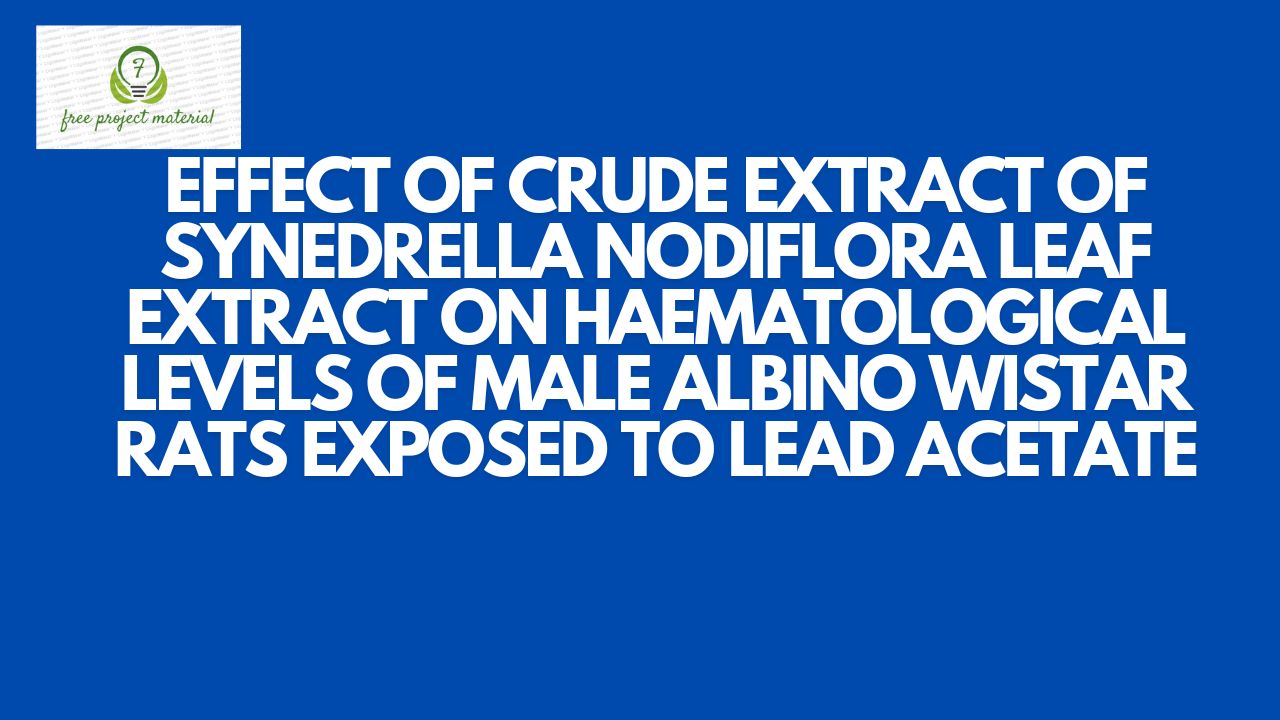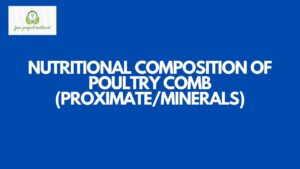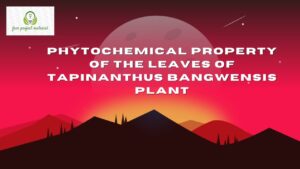ABSTRACT
Analysis of the effect of crude extract of Synedrella nodiflora on the haematological indices of male albino Wistar rats was investigated using standard analytical procedure. The haematological indices assayed were RBC, HGB, HCT, MCV, MCH and MCHC. Twenty five (25) healthy male albino Wistar rats were randomly divided into five groups of five (5) rats each. Group 1 served as the normal control and was sustained with rat chow and distilled water only. Group 2 served as the negative control, groups 3, 4 and 5 served as the treatment groups administered with 500 mg/kg bwt extract, 0.5ml lead acetate, 750mg/kg bwt extract, 1 ml of lead acetate and1000 mg/kg bwt extract, 2ml of the lead acetate. All the rat had free access to rat chow and distilled water adlibitum. After 28 days of treatment, the rats were subjected to overnight fast and blood samples were collected by cardiac puncture into an EDTA bottle after being anaesthetized with chloroform. The results of the analysis showed a significant (p<0.05) increase in the level of RBC, HGB and HCT when compared to the negative group and the normal control group. MCV, MCH and MCHC indicated a significant (p<0.05) decrease when compared to the negative group and the normal control group. The result suggest that the extract could be used for boosting of blood levels in subjects if properly processed.
TABLE OF CONTENTS
Page
Title Page – – – – – – – – – i
Certification – – – – – – – – – ii
Dedication – – – – – – – – – iii
Acknowledgment – – – – – – – – iv
Abstract – – – – – – – – – v
Table of Contents – – – – – – – – vi
CHAPTER ONE: INTRODUCTION
1.1 Background of the Study – – – – – – 1
1.2 Aim and Objective of the Study – – – – 6
1.3 Scope and Limitation of the Study – – – – 6
CHAPTER TWO: LITERATURE REVIEW
2.1 Description of Syndrella nodiflora – – – 7
2.2 Phytochemistry of Syndrella nodiflora – – – 8
2.3 Medicinal Uses of Syndrella nodiflora – – – 9
2.3.1 Pharmacological Activity of Syndrella nodiflora – – 12
2.4 Toxicity of Syndrella nodiflora – – – – – 15
2.5 Effect of Lead on the Hematopoietic System – – – 16
2.6 Mechanism of Lead Toxicity – – – – – 18
2.6.1 Prevention of Lead Induced Toxicity – – – – 19
2.7 Significance of Determining Haematological Indices – – 20
2.8 Haematological Parameters – – – – – 22
2.8.1 Red Blood Cell Count (RBC) – – – – – 22
2.8.2 Packed Cell Volume – – – – – – 25
2.8.3 Mean Corpuscular Volume – – – – – 26
2.8.4 Haemoglobin – – – – – – – 28
2.8.5 Mean Corpuscular Haemoglobin – – – – 30
2.9 Effect of Other Leaf on Haematological Indices – – 30
CHAPTER THREE: MATERIALS AND METHOD
3.1 Materials – – – – – – – – 32
3.2 Methods – – – – – – – – 32
3.2.1 Sample Collection and Preparation – – – – 32
3.2.2 Preparation of Heavy Metal – – – – – 33
3.2.3 Experimental Design, Grouping and Treatment – – 33
3.2.4 Collection of Blood Sample – – – – – 35
3.2.5 Determination of Haematological Indices – – – 35
3.3 Statistical Analysis – – – – – – 35
CHAPTER FOUR: RESULTS AND DISCUSSION
4.1 Results – – – – – – – – 36
4.2 Discussion – – – – – – – – 38
CHAPTER FIVE: CONCLUSION AND RECOMMENDATIONS
5.1 Conclusion – – – – – – – – 40
5.2 Recommendations – – – – – – – 40
References
CHAPTER ONE: INTRODUCTION
1.1 Background of the Study
The tropical condition prevalent in Nigeria gives it a very rich flora. With this rich flora can be found many poisonous plants which are yet to be scientifically investigated (Nwude and Parson, 1977).
Synedrella nodiflora has been characterized as a weed in Nigeria, and can also be found over a wide range of locations worldwide. There have been reports that this plant has medicinal value (Abade et al., 1996), potent anti-inflammatory effect, effective analgesic and antipyretic activities in rodents (Forestieri et al., 1996).
Synedrella nodiflora (L.) Gaertn (family Asteraceae) is a common weed of waste places found predominately in Ghana and other west African countries as well as tropical Asia. In Ghana, traditional healers boil the whole plant and administer the aqueous extract for the management of epilepsy. They also use the leaves for threatened abortion, hiccup, laxative and as a feed for livestock. Subsistence farmers in Ghana also use the leaves of the plant as post‑harvest protectants. In Nigeria, some indigenous tribes traditionally use the whole plant for treating cardiac problems and to stop wound bleeding. The leaves of the plant is eaten by human as vegetable in Indonesia. Traditional healers in Indonesia also use the leaf sap together with other materials for stomachache and rheumatism. In Malaysia, the leaves are used for poulticing sore legs and for the treatment of headache, and the sap is instilled into the ear for earache. The leaf extract of S. nodiflora have been reported to control storage pests but had no toxic effect in vertebrates. Also, the insecticidal effects of various solvent extracts of the aerial parts of S. nodiflora on the fourth instar larvae of Spodoptera litura has been reported.
Lead and other heavy metals are found with relatively low anthropogenic concentrations in all parts of the environment. However, human activities have added exceptionally higher concentrations of these heavy metals into the environment, particularly in areas where the metals are mined, processed and used industrially. Lead is not a normal constituent of the body and causes serious damage in all human tissues. When lead enters the bloodstream, it is primarily distributed to blood, soft and mineralizing tissues. About 5-10 % of the total body burden of lead is found in the blood; soft tissues accumulate 10-20 %, and bones contain 70-85 % of the total body burden of lead. Lead toxicity often affects the erythrocyte membrane, significantly leading to decrease in the mobility of the erythrocytes and alterations in other haematological parameters.
Environmental lead is ubiquitous and everyone has some amount of blood lead level. Lead presents one of the largest environmental medical problems because of the number of people being exposed and the attendant public health impact. In a study that surveyed the causes of lead toxicity in Jos, Nigeria, mean blood concentration of 8.7 µg/dl with a range of 1-34 µg/dl were reported, with 34 % of the subjects having concentrations of 10 µg/dl or greater. Determination of blood lead level is the most direct assessment of the body lead burden, although it represents only about 5-10% of the total body lead. Haematological profile of laboratory animals exposed to lead showed polycythemia with elevated level of haemoglobin. Mice treated with lead acetate showed significant decrease in the total erythrocyte and total leucocytes counts but significant reductions in the haemoglobin (Hb) content and packed cell volume. Similarly, it was observed that Hb level was reduced after intoxication with lead acetate at a dose of 400 mg/kg body-weight of fodders, an indication that lead interferes with the formation of haemoglobin.
Haematology is the study of the morphology and physiology of blood (Institute of Biomedical Science, 2013). Wikihow (2013) reported that haematology is the branch of biology (physiology) that is concerned with the study of blood, blood-forming organs and blood diseases. According to Wikipedia (2013a), haematology is the study of blood, the blood-forming organs and blood diseases. Maxwell (2013) and Rasko (2013) posited that haematology deals with many aspects of those diseases which affect the blood such as anaemia. Blood is important and reliable medium for assessing the physiological and health status of individual animals (Oduye, 1976; Egbe-Nwiyi et al., 2000). According to James (2004), the life of all flesh is the blood and it is useful for atonement for human soul. Blood is useful for assessing the health status, clinical evaluation for survey of physiological/pathological conditions and diagnostic and prognostic evaluation of various types of diseases in animals (Taiwo and Anosa, 1995; Awah and Nottidge, 1997, 1998; Nottidge et al., 1999; Kral and Suchy, 2000; Padilla et al., 2000; Tambuwal et al., 2002; Singh et al., 2002; Obasoyo et al., 2005; Alade et al., 2005; Amel et al., 2006). Haematological parameters are those parameters that are related to the blood and blood-forming organs (Waugh and Grant, 2001; Bamishaiye et al., 2009). Blood parameters change in relation to the physiological status of an animal. The haematological examination is among the methods which may contribute to the detection of some changes in health and physiological status, which may not be apparent during physical examination but which affect the fitness of the animal (Kronfeld, 1969; Bamishaiye et al., 2009). Haematological analysis involves the determination of different blood parameters such as packed cell volume, Red Blood Cell count among others, which can be done using either the electronic quantification or manual quantification (Wikihow, 2013).
1.2 Aim and Objectives of the Study
1.2.1 Aim of the Study
The aim and objectives of the research project was to determined the effect of crude extract of Synedrella nodiflora on haematological level of male albino Wistar rats treated with lead acetate.
1.3 The Objectives of the Study were:
- To determine the Red blood count of the albino wistar rat
- To determine the Hemaglobin of the albino wistar rat
- To determine the Hematocrit of the albino wistar rat
- To determine the mean cell volume of the albino wistar rat
- To determine the mean corpuscular hemaglobine of the albino wistar rat
- To determine the mean corpuscular hemaglobine concentration of the albino wistar rat
1.4 Scope and Limitation of the Study
The design of this research project was to determined the effect of crude extract of Synedrella nodiflora on haematological level of male albino Wistar rats. Due to time, financial constraint and level of study, this research project was limited to only the effect of crude extract of Synedrella nodiflora on haematological levels of male albino Wistar rats treated with lead acetate.



